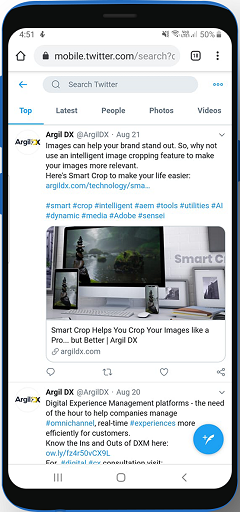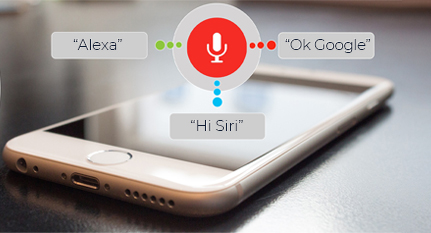Blogs

Explore the Potential of a Well-Designed Progressive Web App
Rapid technological advancement and increasing smartphone usage has inspired the rise of dynamic business models. This paradigm shift has led organizations to transform into digitally advanced businesses. The path to this transformation is filled with challenges, which are also possible business opportunities. An example of how enterprises are taking advantage of such challenges is the push for more responsive designs in websites and applications. Hence, the idea for Progressive Web Applications (PWAs) that enable enterprises to easily offer omni-channel user experience. When it comes to mobile apps, most companies face two common challenges, which can be successfully converted into business opportunities.
- Huge competition for market share: There are so many customer-centric applications and services. This makes it tough for a company to create a great impression on its customers.
- Need for better customer interactions: The huge volume of customers in the market makes communication between companies and customers a big challenge.
Progressive Web Applications (PWAs) make it easier for brands to successfully reach and engage their target audience. You can retain customer loyalty using PWAs by scripting user journeys on a better omni-channel user experience (UX). In this article, we will understand how progressive web applications can make omni-channel UX better. Firstly, we need to understand the core concepts of progressive web application and omni-channel UX, and then understand how they are connected to each other.
What are Progressive Web Applications?
In short, these are applications which are fast, reliable and engaging. When we say an application is reliable, not only should it be secure but adapt to variable situations. A common situation that is variable in nature is the state of your network. When launched from the home screen, a Progressive Web Application loads up instantly, regardless of the network state. When we say fast, the application should load within 3 seconds.
53% of users abandon the site if it takes more than 3 seconds to load. – Google
When we say engaging, it means providing an immersive user experience. You should be context aware and provide interesting content to the users. Moreover, your apps should have the ability to re-engage users with push notifications.
What is Omni-channel User Experience?
Omni-channel UX can be well described by its elements. Here are some of the elements of omni-channel user experience.
Consistency: Users expect a consistent as well as meaningful experience while interacting with your brand in any channel. Here, consistency refers to something much broader than brand consistency; it refers to familiar screens, well-positioned buttons, a singular tone of voice, and uniformed functionality.
Where consistency lacks, your credibility might suffer.
Context Optimization: You can really maximize the value of an omni-channel approach by optimizing each channel for specific interactions. Another benefit of this practice is the opportunity to differentiate yourself from your competitors by enhancing customer engagement. You can achieve this by leveraging the exact technological capabilities of each channel.

Availability: In simple terms, availability means offering choice. With omni-channel, the role of UX professionals is not limited to mobile and web. It has now expanded to a whole lot of online and offline applications. Your consumers seek different choices rather than a single way to access your content, products or services. Again, these choices vary greatly from user to user. Therefore, it is very important to offer different channels for interaction and ensure availability of important activities.
Seamlessness: With omni-channel, the data should be made available across all platforms. If a service is available through your website as well as mobile application, the users should be able to access almost all data of the web application through the mobile application. Twitter Lite is a popular web app that offers the look, feel and functionalities of the Twitter app. The Twitter web app loads pages instantly, reduces data consumption and re-engages with users via push notifications. You can even add this web app to your homescreen. This is a proper example of seamlessness. It creates a great image of your services on users.
How Progressive Web Applications and Omni-channel User Experience are connected?
For progressive web applications, an important property is their ability to engage users. What engages you more? Most of us would say interesting content. Here comes the use of context optimization. With context optimization, users get interested content delivered to their devices through web-based push notifications. Research says, in many cases, context-based push notifications are seen to increase user engagement by four times. It’s awesome, isn’t it? Again, the reliability of a web application is an important factor. A reliable web application must be capable of displaying cached content to the user in case of any network instability. This adds to the availability of data in omni-channel user experience.
Provide Seamless Interactions with Omni-channel UX of Progressive Web Apps
Some of the important features of Progressive Web Applications and omni-channel user experience have already been mentioned above. We can now clearly derive some of the advantages over native (normal) applications.
Progressive Web Apps are efficient: PWAs are delivered to devices through the web. So, they are lightweight and do not overload the device processors, especially the mobile devices.
PWAs are adaptive: PWAs have an adaptive nature. They can be transferred over the air to any device independent of the operating system. This is a great advantage of progressive web apps which favors the customer as well as the company.
PWAs are the future: In today’s date, there are millions of native applications available across different platforms. So, it has become quite necessary to build an application that can be downloaded and installed in a single click, needs no setup and consumes very less resources. It is a bit hard on the native app part to do this. But, with PWAs it becomes extremely easier. Only a basic app with a simple web view can handle most of the tasks. Again, the immense popularity of mobile devices over desktop computers contributes a lot to the popularity of progressive apps.
PWAs are reliable: PWAs can take advantage of caches and have the capability of displaying some content to the user even when there is no network connectivity.
PWAs are faster: PWAs support faster loading and less UI lag. As it is mentioned above, PWAs use less resource. So, once they get loaded, they can deliver a smooth experience to your users. This increases your brand credibility too.
PWAs are easy to modify: This can be a great advantage to the organization. As you already know, PWAs are delivered to the devices through the internet. So, it is very easy for the company to implement any modification to the app quickly. But, in case of native apps they need to post an update in the respective stores, notify the user about the update and then only if the user wishes to update, the modification will become usable. It’s quite hectic. PWAs completely eliminate this.
This is how PWAs provide better omni-channel user experience. This amazing piece of technology is increasingly becoming popular on the internet. Within 10 more years, it is believed to occupy 96% of the web empire.
Thinking about improving your customer journey across channels with a progressive web app? Take a look at how we can help you build a robust and scalable WPA.








